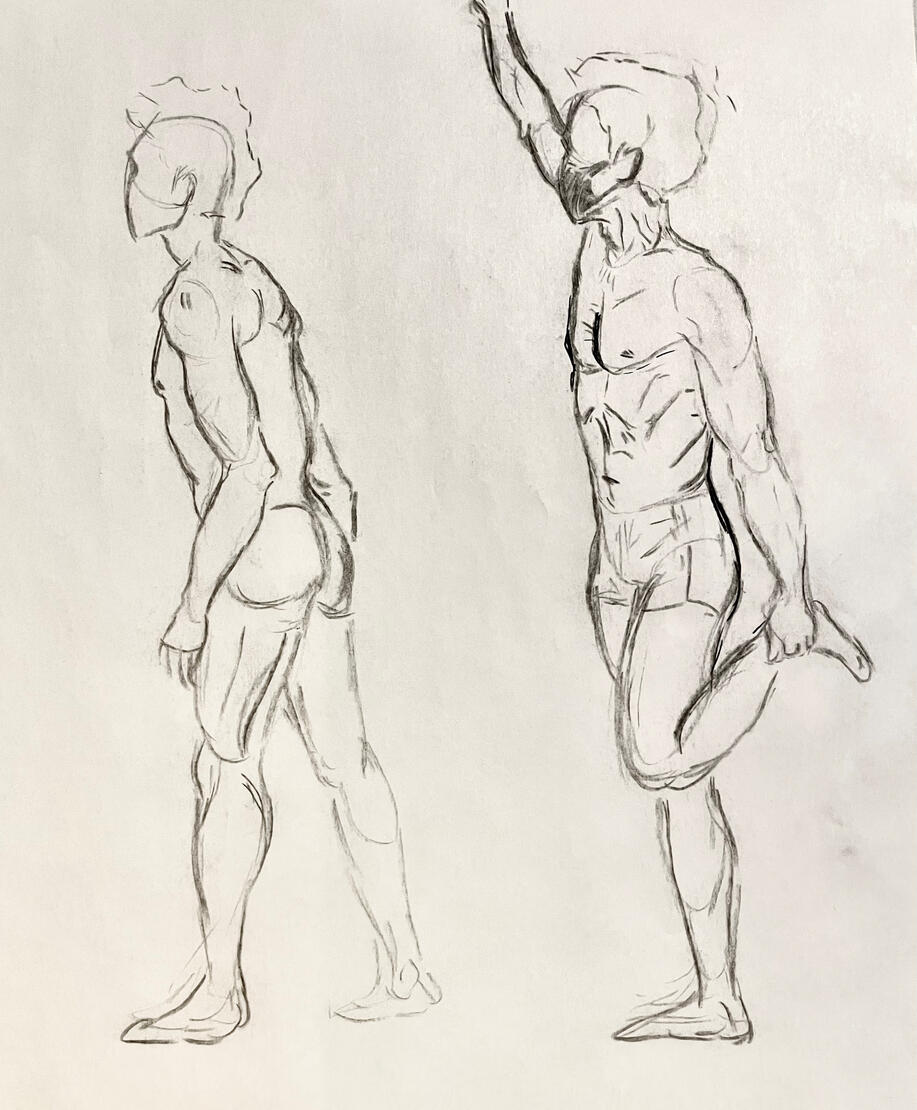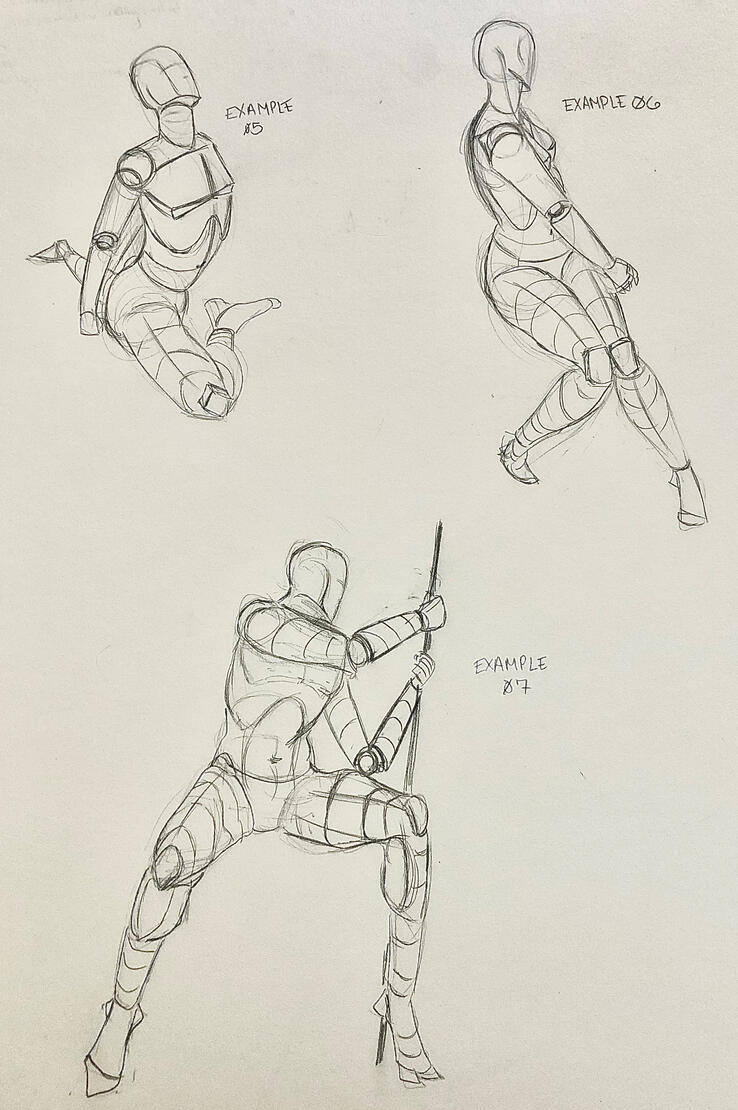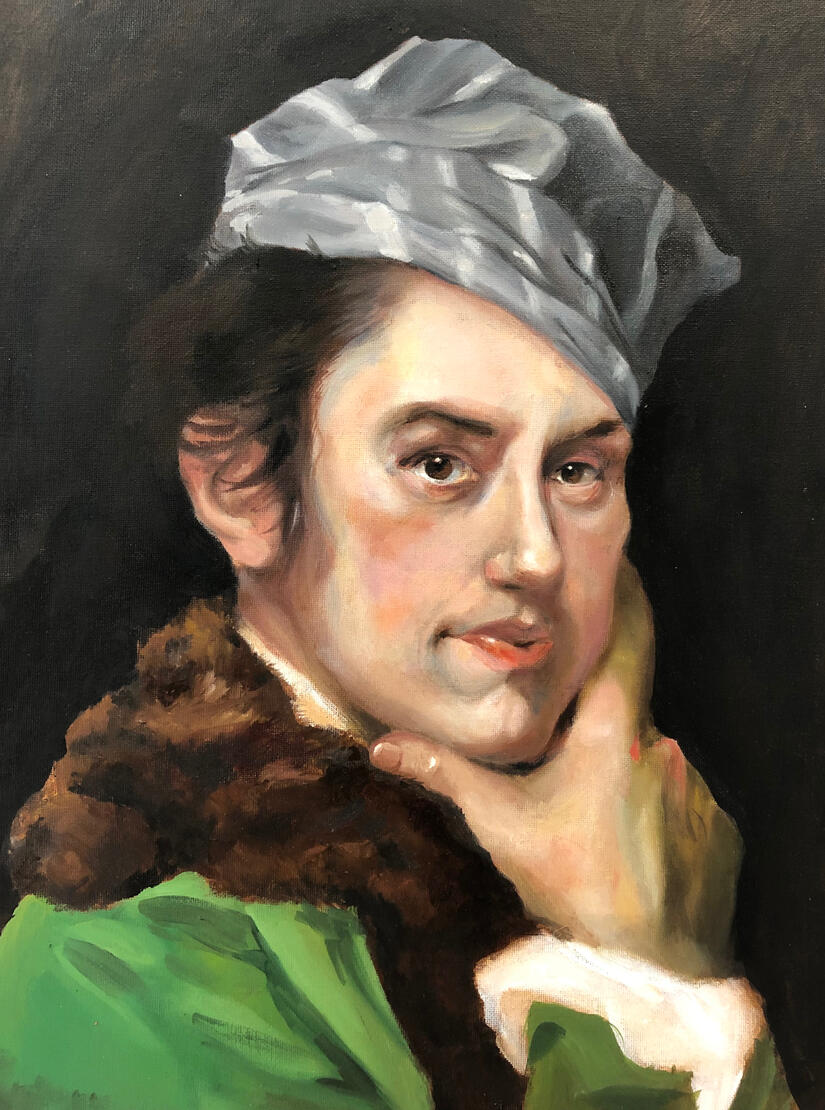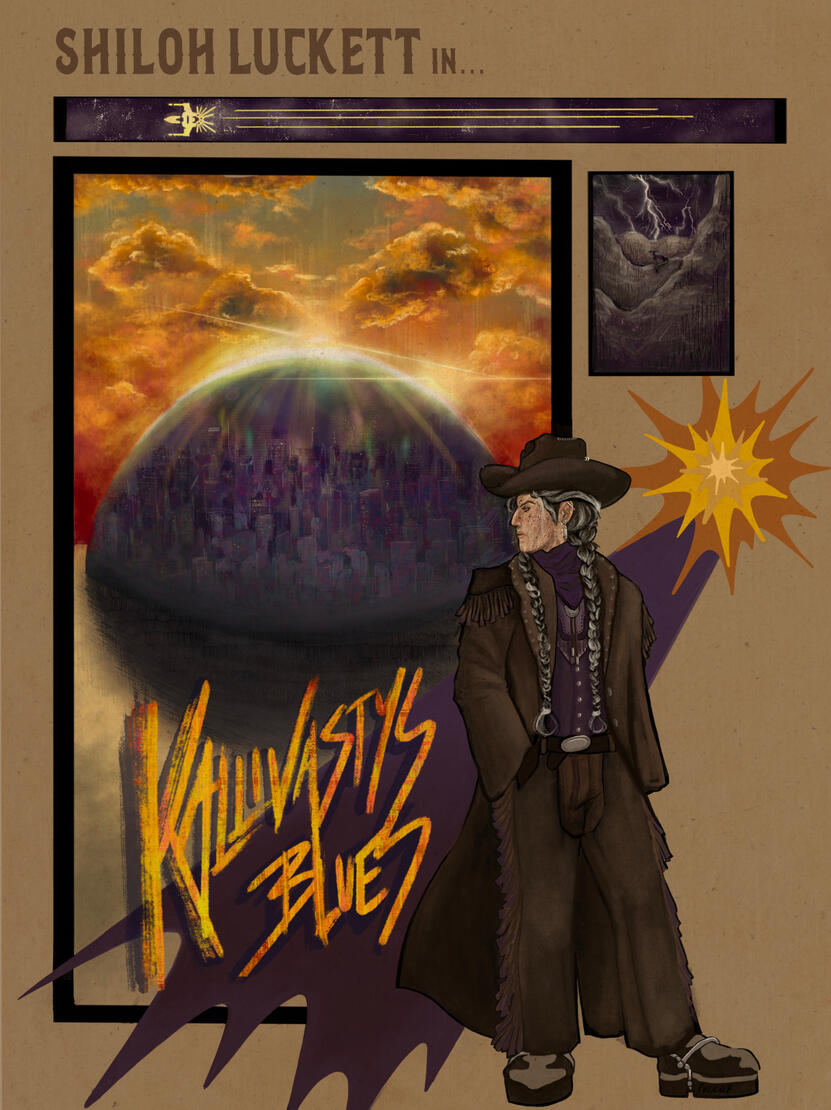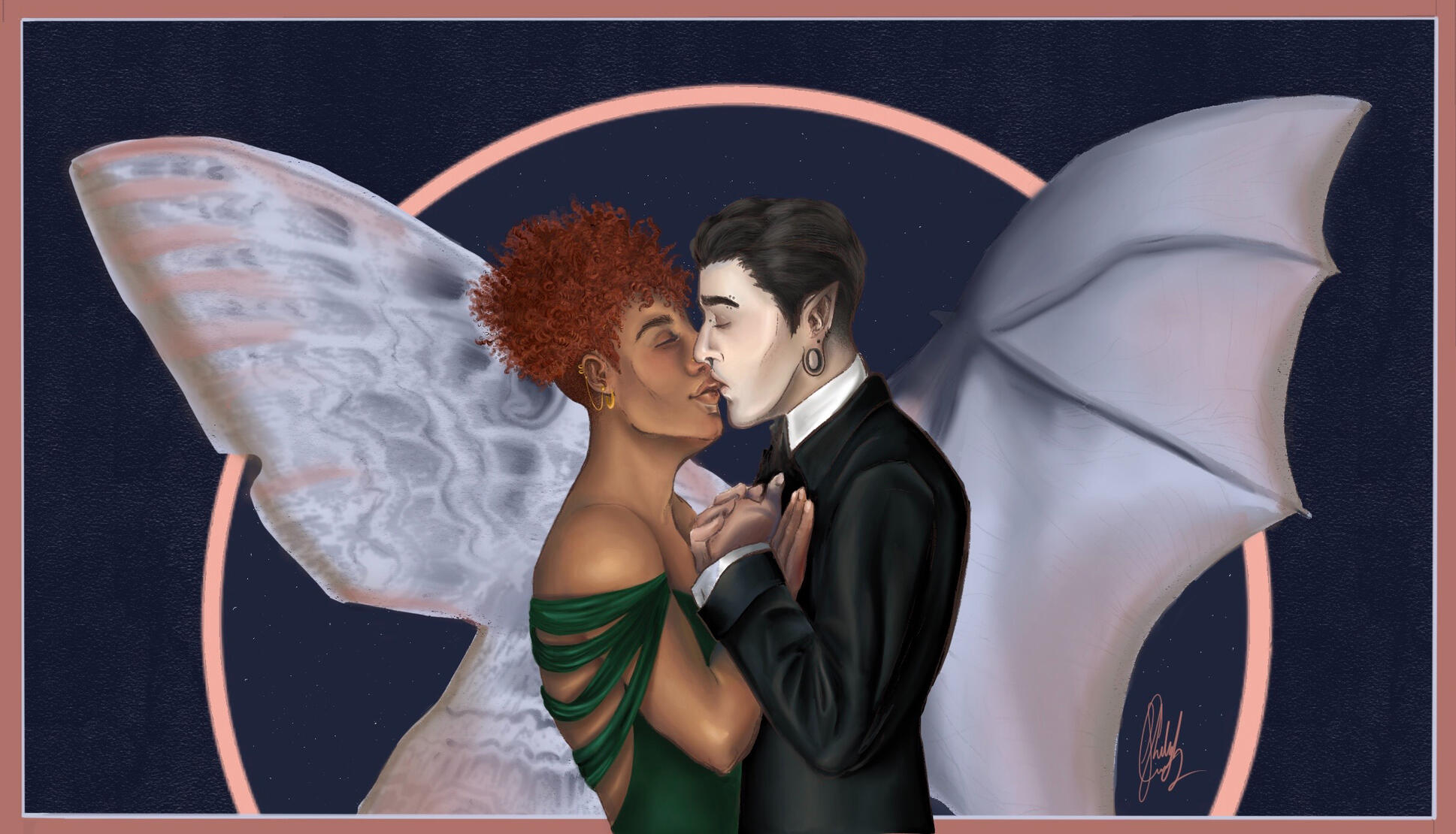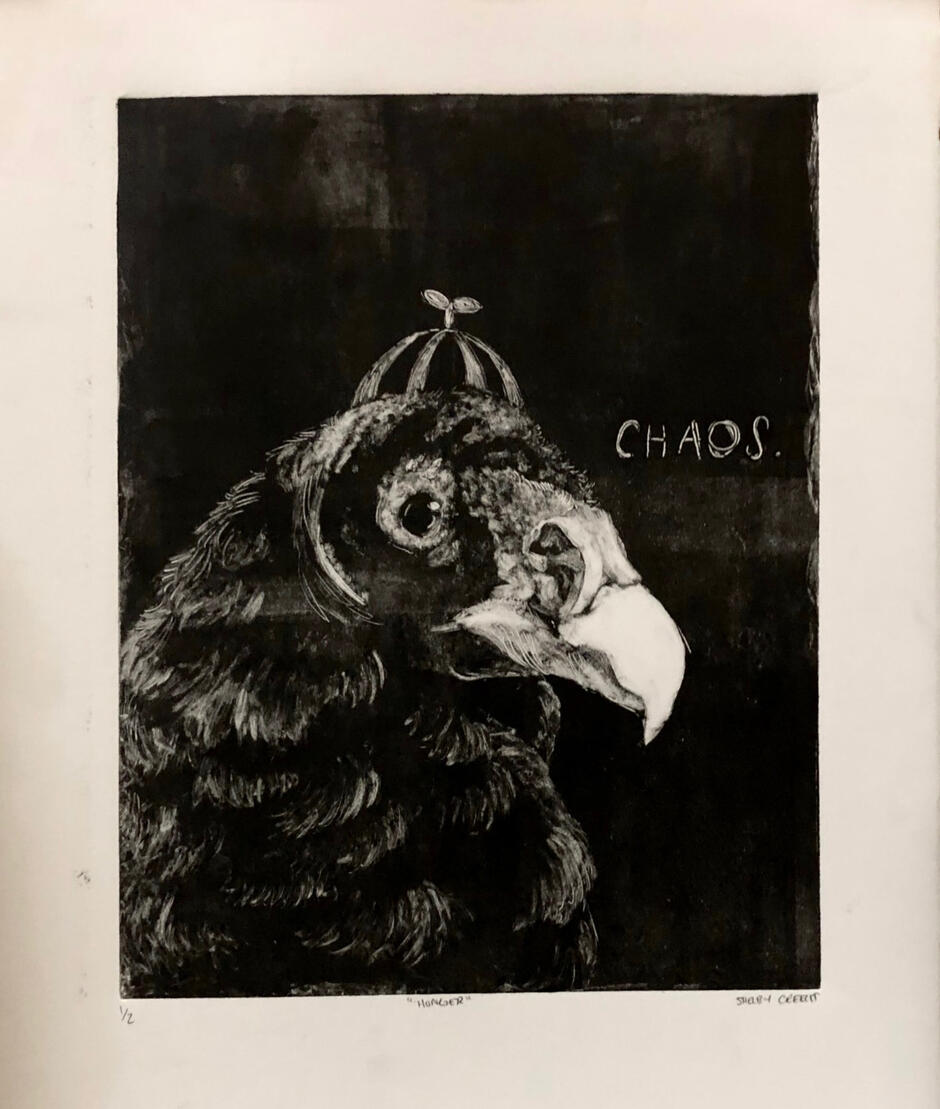
Artist, Writer, Editor
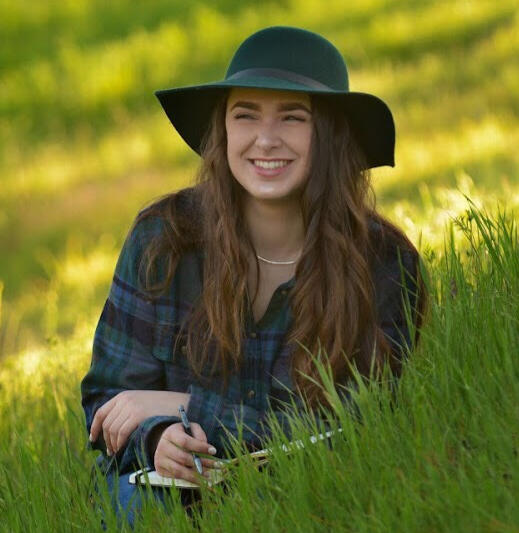
About Me
Hello! I’m Shelby Creech. I've had a lifelong passion for storytelling through the written word and visual arts. I have been writing since I could pick up a book, and relentlessly paved a creative road in every moment after. I pursued a foundation through my studies at Belmont University in Nashville, Tennessee, majoring in Art and Writing. Ultimately, I hope to inspire excitement, fascination, and empathy through connecting my passions to professional media, whether that entails writing and editing, marketing, or working in design and illustrative work. Please explore my site to find samples of my work and get to know me better.
Social Media:
Visual Development
Character Concepts

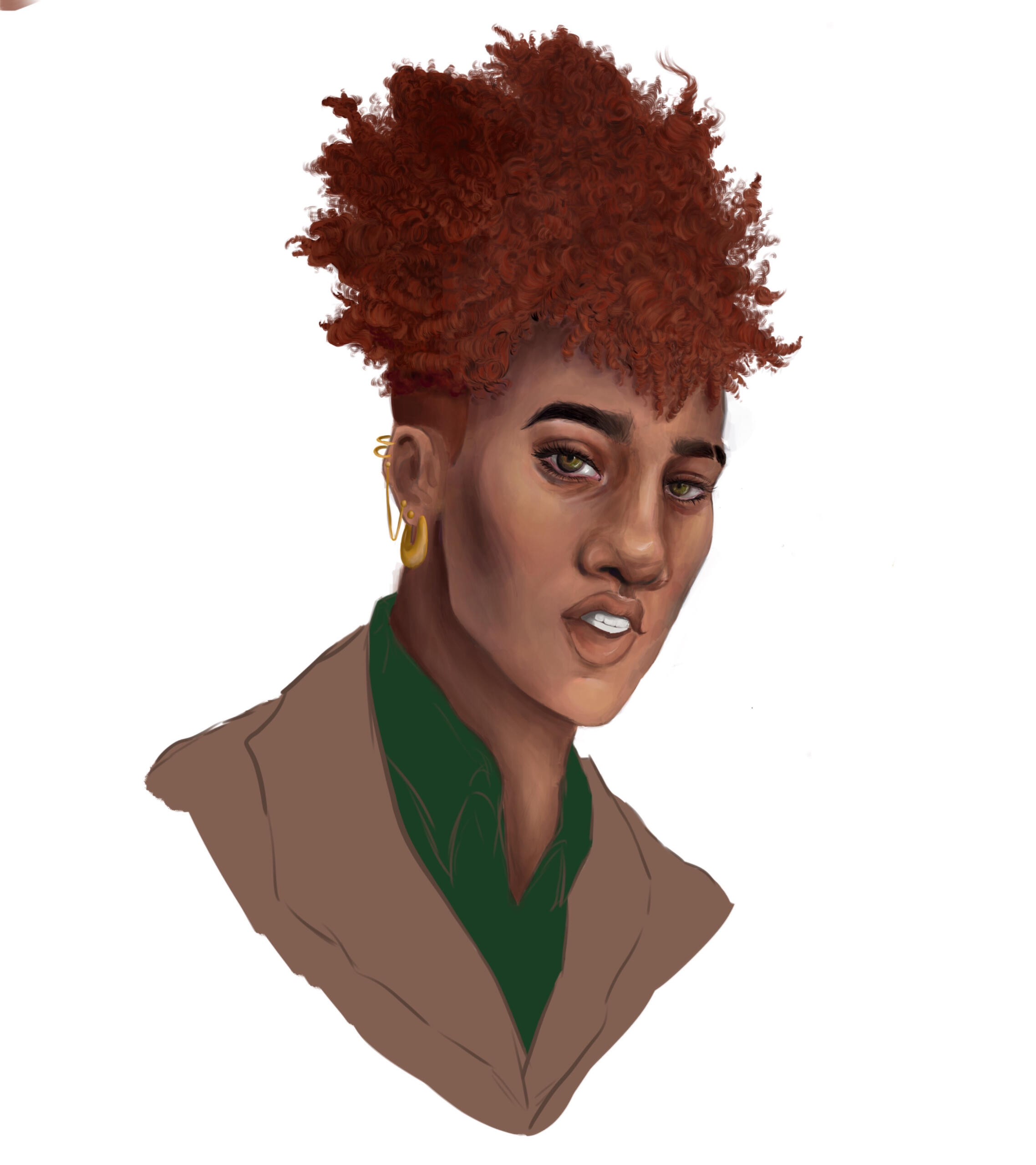


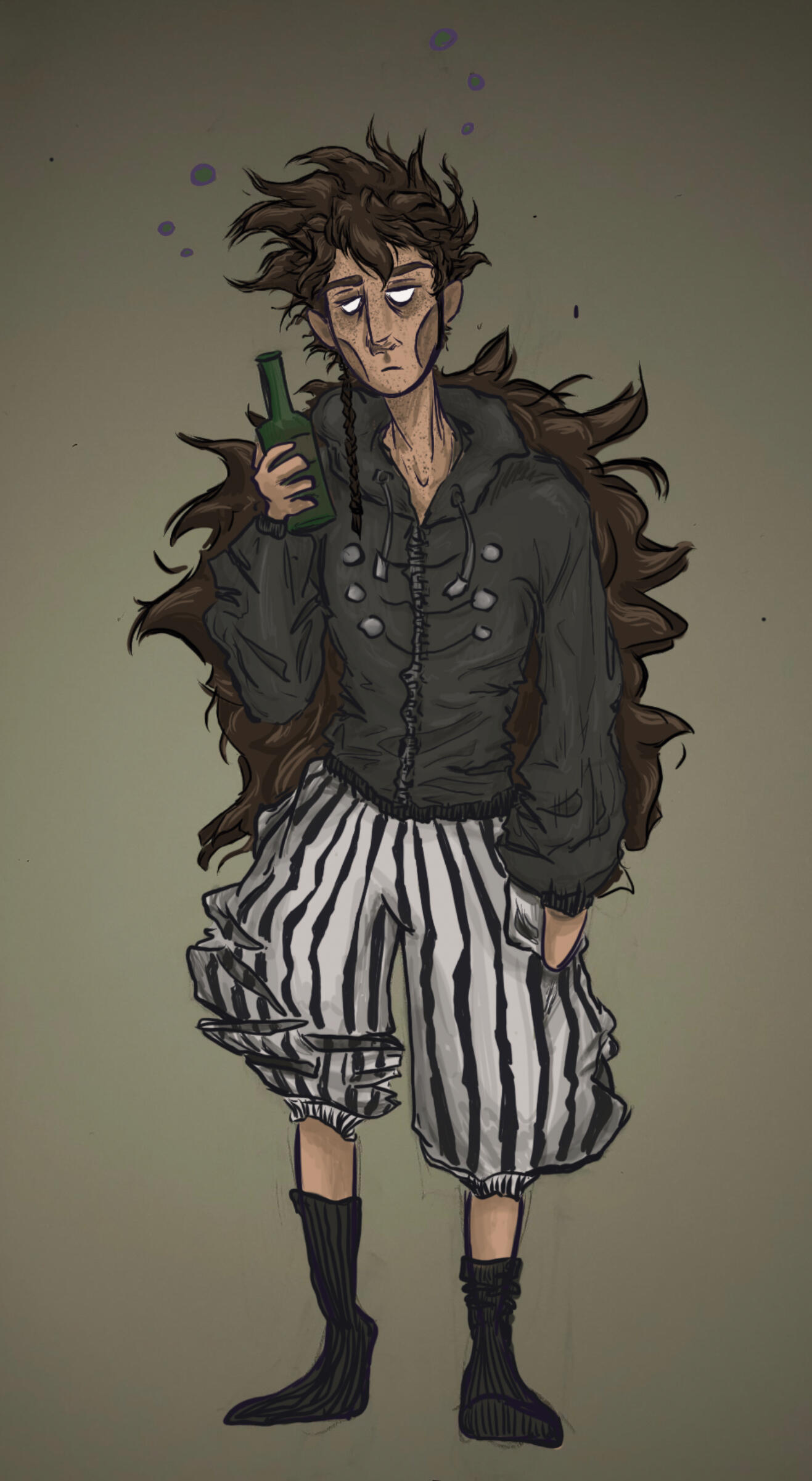
Projects
Cryptids and the Queer Experience Series
Through the lens of folklore, urban legends, and the unknown, my work expresses a variety of experiences individuals go through in the queer community, whether it relates to gender, sexuality, or society. Themes of alienation, fear, community, love, discovery, and more are explored through this series, and the ways these concepts differ for LGBT+ individuals in a society that is not tailored for them. Though each piece has a specific narrative attached, there is inevitably a deeper past and future attached to each artwork that the viewer can interpret as they wish. This series aims to elevate the monster from a nameless terror to a being with an identity, worthy and deserving of understanding, love, and acceptance— with the ability to help change the views of those who remain open. This work is made for everyone- those who are looking into the community, those of us who are looking out from it, and every person in between, unsure of where they stand.

The Bullebak
The trans flag- white, blue, and pink. Dutch folklore.
The Bullebak was often seen as the typical children’s monster to scare them into behaving, with tales of hooks and drowning. However, once victims were pulled under the water, they were said to witness the most beautiful sky full of stars that they had ever seen. Trans individuals are wrongly portrayed as dangerous, with harmful narratives that they might lure people in or influence one to change their lifestyle. However, for those who have grappled with confusion about gender and sexuality, and who longed for answers, being able to meet and talk to other trans and gender non-conforming individuals can be incredibly hopeful and illuminating. What others might view as a downfall or a drowning, could be a gift of understanding, community, and freedom for trans individuals, like witnessing a new sky of stars for the first time.

The Mothman
The nonbinary flag- black, purple, yellow, and white.
American urban legend.
The devastating story of the mothman ties back to the collapse of the silver bridge in Point Pleasant, West Virginia, 1967. Residents of the town reported seeing a mysterious flying creature and experiencing strange events following up to the accident. Some claimed it was pure evil, a bringer of doom, while others saw it as a prophet delivering a warning. This piece sides with the latter idea, with the creature having visions of destruction and seeking to stop it. Dealing with the conflict and debate of coming out is particularly difficult when you are unsure if your identity will be understood, or if people will even be willing to attempt to understand what they don’t already know. It can feel like constantly seeing and worrying about the worst-case scenario, and debating what is worse- the loneliness and pain of living inauthentically, or potentially risking everything to tell the truth.
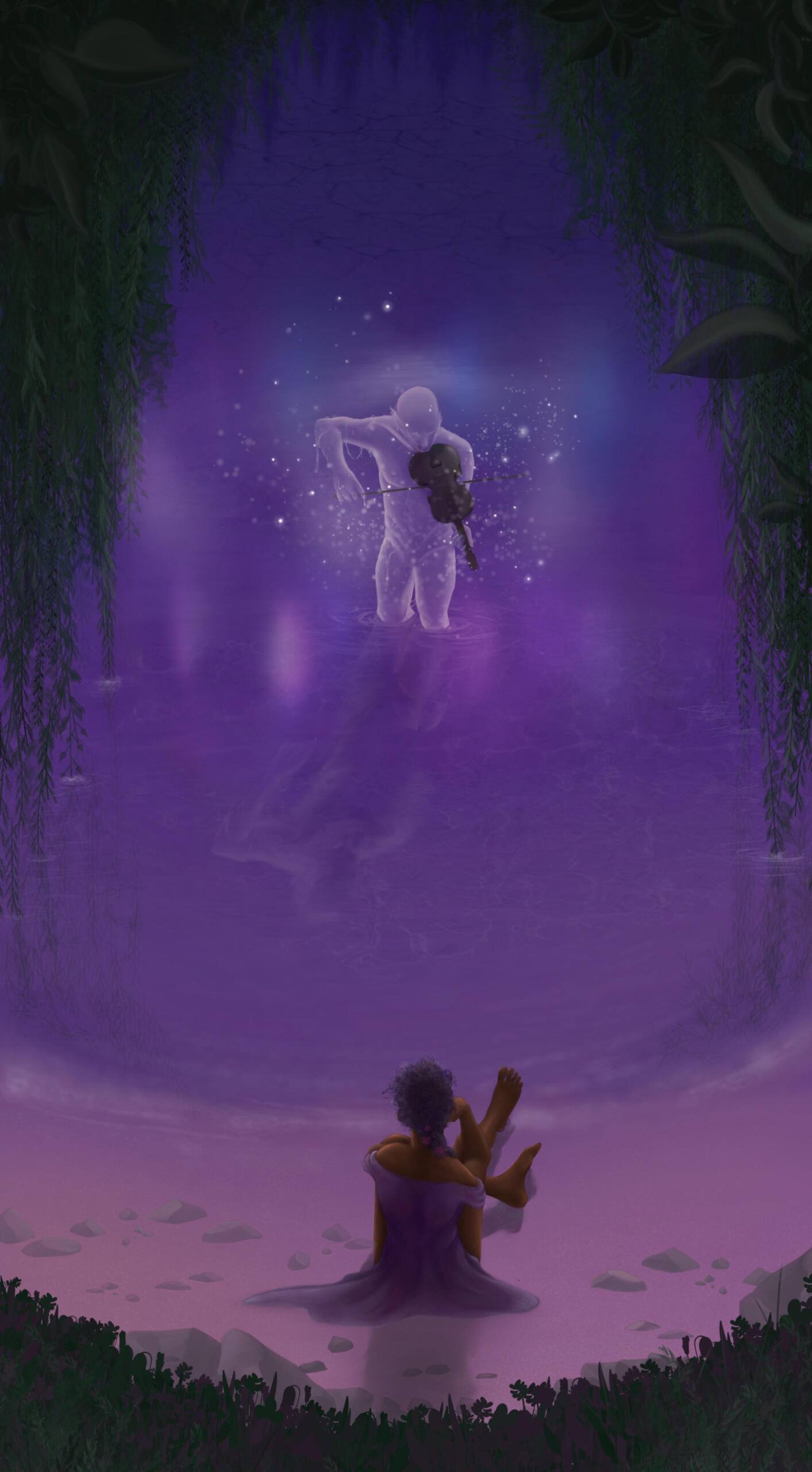
The Nykr
The bisexual flag- blue, pink, and purple. Germanic folklore.
This creature contains multitudes. Known in a massive variety of cultures, its portrayals range from having malicious intent to lure in victims, to being helpful and friendly. While often portrayed as human, it occasionally is depicted as draconian. No matter the tale, the allure of this creature persists through time and culture. Perception is key. Though one’s upbringing may influence and shape their beliefs, your ideals are ultimately up to you and how you choose to interpret your experiences. Bisexuals are often depicted as greedy, selfish, or an object for the pleasure of others. Queer people do not exist to be the recipients of assumptions, and deserve to simply exist and be seen as who they are.

Am Fear Liath MòR
The LGBT+ Pride Flag- red, orange, yellow, green, blue, purple. Scottish folklore.
This Scottish version of the yeti is often one of terror, highlighting mountaineers’ terrifying tales of being followed, and seeing massive creatures lurking along the horizon. Eyewitness accounts and footprints are considered, but other explanations have been offered as well. Brocken spectres are often displayed across mist and fog, creating massive, looming silhouettes, often surrounded with a rainbow halo. Combined with travelers suffering from dehydration, exhaustion, and being alone, it makes sense that this could be confused as a monster. But staring upon these spectres is also a thing of beauty. Staring into something beautiful and confusing from the outside can be both terrifying and fascinating, particularly when it is something you want to be involved in. Being closeted for one reason or another and longing for a group to understand and relate to is an experience all too common for queer individuals. There is a profound sense of loneliness in staring at what feels like a mirror and still being disconnected.

Vampire and Ghost
The lesbian flag- dark orange, light orange, white, light pink, dark pink. Various folklore and legends.
Vampires and ghosts are both involved in countless stories around the world in a variety of forms, but both share in common that they were once human. Despite being somewhat disconnected from society in that way, they still are human at the core, and lurk along the edges of humanity holding memories and stories. The community and understanding felt from being in the queer community can be such a gift, even if everyone has different experiences based on their identity and upbringing. You don’t need to be the same as another individual to hold a deep sense of love, trust, and acceptance for them. While there may be a sense of melancholy in detachment, whether that be from the trauma of religion, the AIDS crisis, or discrimination, being able to find love, friendship, and connection with another is one of the most beautiful and unique pieces of being part of the LGBT+ community.
Tarot Series Concepts
Life Studies
General Studies
Figure Studies
Master Studies
Sketches
Writing Samples
Fiction samples
Excerpt from "Revitalization"
“We should make this a support group,” Sam said. It was simple, straight to the point, as if she hadn’t decided she’d already go through with it. Her eyes were wide open, searching for validation. Those pretty blue irises had paled in the months since her procedure, dulling to a gentle grey that held none of the same interest. It felt right, somehow.She bored her gaze into Andy’s forehead. Andy simply hummed in reply, refusing eye contact in favor of her lukewarm coffee.“I’m serious," Sam continued, relentless. "You know there were two other people we went to high school with who went through the same thing?” She couldn’t ever just say it blatantly, finding little ways to soften the blow. It was as if just saying the word was an offense: died.Frankly, Andy would have preferred it. Besides, it was hardly the same thing. There was certainly a shared understanding in the experience. She’d died on a Wednesday, and Sam on a Thursday. It was that middle of the week blur, they decided— not enough time to ruin the whole week, and not as convenient as having a weekend to grieve— one of the few things they agreed on.“Honestly, I feel like it would make a good impact,” Sam continued, pulling her gaze to the crusted linoleum on the ceiling for dramatic effect. There it was again, that air of false empathy. Andy had never met anyone so desperate to be recognized for their kindness and put on a pedestal for it. “And it’s not like the people here are strapped for cash. They had had to have enough money to go through the procedure in the first place. I think we could easily get the kind of, like, financial support to make a whole thing of it, y'know?”Andy caught the eye of a woman and her child shoved to the corner of a stuffy green couch. That alone drew her distaste in the form of a bone-deep envy. She knew from experience how comfortable the seat was. Multiple visits to the shop in the previous week had seen it occupied by the time Andy had arrived. She pined for those shitty old cushions, deformed in all the coziest ways.But what actually made her angry was the disapproval in her eyes as they swept up and down the forms of the two people across from their table. It was still a sort of taboo to discuss it in public. To the staring woman’s credit, those who could afford to be brought back always returned a bit different- physically, emotionally, mentally. Their skin never held the same glow; their eyes lost their luster. Any process like that had limits. Revitalization was still a new science. At first, it had lit up the news as something foolish and questionable. But after a few successful trials, funds were pouring in. And after a few years, it had just become another part of life; another previously improbable idea made normal.It was preferential to mouth an expletive at the stranger to shame her into feeling some guilt and finally turning away, but the backlash wasn’t worth it. If the woman didn’t blow up at her, Samantha certainly would, and she’d rather not get kicked out of the only coffee chain for 15 miles.“I think there’s already support groups for that kind of thing,” Andy finally replied, unable to find an excuse as to why she could continue remaining silent.“Well, yeah. But I looked it up, and there are none around here. I mean, not that there’s much else. But people shouldn’t have to drive hours for a chance to get things off their chest.”Andy supposed she should have suspected that Sam would have done her research. She knew from high school that whenever she got bored, Sam would go on Wikipedia and find whatever fun facts she could procure. If there was any knowledge to be had, Sam would have it. “These people probably have therapists,” she pointed out, unsure why she was fighting about something so futile.“You don’t.”Andy had mentioned her reasoning countless times, so repeating herself was more often on a “when”, rather than an “if” basis. “Kind of expensive, bud. Unless the therapist died, too, I’m not really interested.”“That’s exactly my point. You should be able to discuss this with like-minded people who went through the same thing.” She waved a hand. “That’s the whole point, actually. Empathy, shared experiences, etcetera?” Andy could see it now— Sam, with a whole room of people listening, uninterrupted, garnering all the sympathy she could. The corners of Andy’s lips turned up at the thought.Instead of mentioning that, she attempted a subject change, knowing that briefly putting it off was more likely than it being forgotten. “Do you think Jesus would be pissed off that we can do what he did without all the flashiness? Like, if the guy really did come down for a biblical 'end of the world', no one would believe he’s the son of god now. Bet he wouldn't even have the money for this shit on a carpenter's salary.”Sam’s exasperated expression was just as she’d expected. “If hell exists, you’re going there for sure.” She was still smiling.Andy scoffed. “If I’m going to hell, all of us are. Living like this is an offense.”
Excerpt from "Oleander"
Sunlight filtered through the trees in brief patches, spilling color into the darkness of the woods. The saturation felt inviting, pressing up against cold shadows, and Mikhael had to remind himself not to get too caught up in stopping to appreciate it. Ironically, there wasn’t ever much time for that. Even in a job where he was tasked with taking care of the forest, Carolus forced him to adopt the detached and professional persona he wore.Only Mikhael’s footsteps managed to catch the branches and leaves of the ground below— his elder was utterly silent in comparison. Mikhael had assumed that alone had been the cause of the anxiety thrumming through his head. But when he turned to glance over his shoulder, the beast from the previous day stood behind him, a steady void among the towering evergreens.The creature’s form was large enough to block out the glimmers of sunlight, and yet, he felt if he had blinked, he would have missed it. Its writhing, inconceivable form mindlessly morphed into new, unnecessary limbs every time it so much as moved, and when it gazed in his direction, hundreds of eyes blinked back at him. Breaking eye contact seemed an impossible task when those heavy irises bored into him with such intensity, as if it sought to consume him on sight alone.He took a step back, and it took one forward. It was difficult to tell if the way it lifted its head was an act of curiosity, or intimidation. The action exposed an obscure scar across what Mikhael could only assume to be the creature's neck. He knew that handiwork— he would have known it anywhere. He could still see Leopold’s face in his mind so clearly, with the deep wrinkles of a father who was too young and too prideful to look as such. His kindly eyes juxtaposed the gruff exterior and betrayed the truth. The tough demeanor was forced enough that one would know it was a lie, but he was still somewhere between too charming and intimidating to question. His bow had been perpetually latched to his back— in case he had to mock some soldiers, he'd claimed. But the grip of his fingers and the consistency of his aim said otherwise.Mikhael’s chest ached, the memories leaving him somewhere between nostalgia and regret. His hands curled into fists and shook. The entity remained unblinking.“Leave it be.” Carolus didn’t even spare a glance over his shoulder.“You swore to protect this forest and everything in it.” Mikhael could already assume the old man's expression- unaffected. Finally able to tear his eyes from the beast, he looked to Carolus, wordlessly begging for answers, but his mentor said nothing.Turning back to catch another glimpse of the creature, he was only met with disappointment. As his hands stilled, his shoulders sagged. The shadows in the trees seemed darker than before. “Carolus,” he said, uncharacteristically soft. “Do you... see the beasts as well?”The pause that followed did nothing for his nerves. Carolus had always been more invested in lawful necessities than the intellectual pursuits of this job, but behind that, Mikhael knew there was something hiding beneath that. “I don’t have to see them. I just know. They have a presence.”For once, his voice didn’t hold the pretentious tone Mikhael had grown to expect. The older man had kept walking, but after a moment, his raspy baritone rang out again. “...But I used to see them. Before I was removed from the job you hold now." Carolus only peered back for a moment, nearly causing his student to shiver in the same way he had looking upon the creature. "I never forgot the way it felt, seeing such a thing. I can see it in your eyes, too.”"Terror?" Mikhael offered.With the rarity of a miracle and the wonder of an illusion, the corners of Carolus' lips pulled upward. "Fascination."
Nonfiction Samples
Excerpt from "Aesthetics Void of Accessibility: Capitalism and its Effect on the Art Market"
One of the beauties of art should be its accessibility— ideally, a form of creation that transcends language barriers, and can connect to people on numerous levels, whether it be a lifelike rendering of the world around humanity, or an abstract expression of a particular feeling. However, this dream of flawless, open accessibility would be to ignore the fact that art does have a sense of exclusivity through cultural understanding, limits in how that art is presented to others and its portability, social barriers, and of course, wealth attached to art world prominence. Art Basel and UBS’s report on the 2017 art market seemed to prove this, concluding that "close to half of the value of sales on the auction market came from just 1% of the artists whose work sold in 2016."[1] However, while the art market may hold outrageous value for those who do manage to sell, the capitalistic society we live in may not have figured out the most effective way to help all the other artists who desperately seek resources to aid in their own success.One of the prime examples of this tricky situation is the case of the VANTAblack (Or more formally, “Vertically Aligned Nanotube Array-black”: a collection of carbon-like nanotubes that absorb physical light), and the artist Anish Kapoor. Kapoor is the well-known creator of Cloud Gate, also known informally as the Chicago bean, alongside numerous other highly-praised and recognizable sculptures. His reputation has only grown as his collection of art increases in number and value. Vantablack, aside from the scientific definition, is an incredible achievement that can be used to create the effect of an absence of color. Beyond just a coating of black, it appears to be almost entirely void— and unfortunately for artists, it remains solely in the hands of Kapoor, and unavailable to the public...(cont.) ...For so many people with artistic aspirations, it’s difficult to keep faith in a field where it often feels set up for failure. The trope of the starving artist is romanticized in media, and in turn, normalized, expected almost. But in times of struggle, such as the COVID-19 pandemic, art is what society leans on. It is looked to for comfort, and meaning. It stirs controversy and conversations, and helps people open up to the world around them. There is more of a demand for art than ever. New streaming services opening up by the masses to quickly claim their property and sell it once more. Spotify and Apple Music fight for advertisable accessibility to gain popularity. Literary publishers scramble to adjust to the new market as e-books and webcomics take over physical sales and change the system. This goes beyond the fine arts, or the studio arts. People who can create and innovate are useful in almost any field, and having individuals capable of efficiency and teamwork is an essential part of business alongside the art world. And considering how much of a role collaboration plays in making art, the idea that resources should be hoarded for safe keeping negatively impacts everyone and robs them of chances to create potentially fantastic work. In capitalism’s art market, business and aesthetics are inevitably tied together- and this provokes a necessary discussion of what that means for the art that is inevitably going to be produced in this setting, and it’s intention— is it aiming for success and financial gain, to make a point, or both? And what will ultimately deem it successful? In Lisa Siragnian’s review of “Autonomy: The Social Ontology of Art Under Capitalism” by Nicholas Brown, she quotes him as saying "[t]he originality of the present moment is that the concept of medium or material support must be expanded to include the commodity character of the work”, and that “form is a matter of intention”.[7] Siraganian is the chair of humanities and comparative thought and literature, as well as a professor at John Hopkins university. Her additional work in aesthetics gives her a well rounded balance to speak about capitalism and art, and her knowledge of law and modernism especially give an edge to any discussions of culture and the use of copyright, ownership, and how art functions in the modern world. When she analyzes this quote, she specifically talks about how viewing art as a commodity is essential to understanding mass marketability and the current market- everything, even down to what is used to create the work, is important in finding its intention— meaning that vantablack’s singular possession cannot be dismissed.
"The Hunchback of Notre Dame: Adaptation, Innovation, and Recreation"
-Sample from an analysis of stage musical, film musical, and historical film
Esmerelda, the female protagonist who captures the eye of Claude Frollo, Quasimodo, and Phoebus, is allowed to stand on her own as a character rather than being a martyr. Her life is full of tragedy, but it isn’t what defines her. In the original novel, the ending reveals that she and Quasimodo were switched, and that she isn’t actually Romani in heritage- she was a white baby, stolen away. This was inspired by terrible, racist stereotypes, and perpetuated incredibly harmful ideas about the Romani community and culture. The animated version has her as a selfless, capable individual who is clearly depicted as being a person of color. Alongside that, with having a protagonist who is disabled, and ultimately is fulfilled without a love interest, Disney not only breaks the mold of the plot, but the mold of their main characters that the audience has seen, particularly in the Disney Renaissance era. These films are known for following fairytales and formulas, showing that true love conquers all, romantic love being highlighted. This sticks with many of the ideas of the classic Hollywood musical, being something uplifting and enjoyable for audiences of many ages. However, Disney used their platform to try and introduce new life into this genre, particularly the animated section of it. Gary Trousdale, Kirk Wise, and Tab Murphy, the screenwriter and directors of the film, were all well aware that the film needed a G-rating to succeed. Despite being passionate about not watering down a classic piece of literature (Bahr), the marketing for this movie was presented as being something for all audiences, which confused the public- rather than the run of the mill fairytale people had come to expect, this was a story that breached incredibly dark topics, and could shift from a lighthearted, jovial optimism into something surprisingly mature and terrifying in an instant. Annalee Ward’s Mouse Morality discusses the ideas presented in this film as dividing into tragedy and comedy, with mixed results— it describes it as taking a stance which is “life affirming and moves its characters in an upward direction, which, along with the didactic tone, has characterized this film genre. The challenge for the creators of The Hunchback was to take a story that was written in the tragic frame and transform its direction” (Ward 62).Despite numerous adaptations of this novel, the animated musical is by far the most fascinating way to go about this story. Initially, it involves taking an art-style (incorrectly branded as a genre) largely aimed at children (and at the helm of this film, a family-friendly brand known all over the world) and using it to tell a story full of violence, sexual intent, and architecture. Critiques of religion and concerns about content and the messages still leave this book as a recipient of some heavily contrasting opinions and controversy. The fact that Disney allowed this film to be greenlit during the period most associated with their best critical and box office reception is fascinating. it contains some of the most advanced uses of CGI in 2d animation at the time, developed exclusively for this film, and a musical score and lyrics from the iconic Steven Schwartz and Alan Menken.This film brings together both the audio and visual elements of a film musical to display a classic story in a new manner. Notre Dame is lovingly depicted in an artistic way that captures the appreciation that Hugo had for it. The church choirs seem to echo off of the walls of the cathedral, further enhancing the idea of this building as a heavenly, ethereal place. The stained-glass windows and bells each are shown as visual marvels, adding rainbow lights to the songs and creating a larger than life atmosphere. Songs like “God Help the Outcasts” manage both to critique the church and its patrons, criticizing their greed and self-centered nature while characterizing what is important to Esmerelda in the form of an “I Want” song typical of musicals. The brilliant contrast between “Heaven’s Light” and “Hellfire” manages to take two songs that have essentially the same melody, and transform the first from an angelic plea of hope from Tom Hulce’s innocent performance as Quasimodo into the horrific and self-righteous lust of Frollo. “Hellfire” in particularly is a strikingly straightforward number that truly shows Frollo as Disney’s most menacing villain yet, fully believing that despite his struggles, he is the victim, and that he is fully in the right and helpless to the whims of his sexuality and the violent urges that follow that. The song sticks true to the novel and visuals are frightening, shocking, and incredible for an animated film. But despite everything, the final sequences of the film show the acceptance and hopeful narrative that these characters hadn’t received in the past, arguing for a future that deserves justice for those outcasted from religion, when a grand place like Notre Dame should be a sanctuary to all.
"Atlantis: Creation, Translation, and Understanding"
-Sample from an analysis of language and linguistics in the film Atlantis: The Lost Empire
For written influences, the crew still wanted there to be touches of ancient languages. Based on the idea that water was one of the main aspects of the environment, the reading pattern is supposed to emulate that by switching how it is read depending on the line— right to left, and then left to right, and so on switching off. Certain symbols were picked for feelings and aesthetics, but some have meaning- the A, being the first letter and the beginning of “Atlantis”, actually is shaped like a swirl around the way the city is structured— caverns on the outside, the city on the inside, and a crystal in the center represented by a dot. There are letters added to this alphabet, such as ch, sh, and th, while some letters aren’t truly used as much, but exist for better translation into English.On the other hand, looking at spoken language, one of the most fascinating scenes in the film is when the group first enters Atlantis and runs into some of its inhabitants— namely, Kida. She and Milo manage to stop any kind of violent confrontation from occurring only because of his knowledge of their language and his attempts to speak it—without this encounter, the rest of the movie could not have happened. In this brief scene, the characters initially begin speaking Atlantean— but when Milo’s poor attempts at speaking a language that he is much better at reading end up in amusement over his poor speech and American accent, he switches over to Latin. However, Kida actually understands this, and goes on to infer that he speaks the language of the Romans, responding back to him in Latin. This instance occurs in similar fashion when Milo tentatively switches to French to see if she understands, and she excitedly replies back in French as well, before they finally both switch to English for the sake of the audience, as this scene has no subtitles for any real or invented languages.This scene works (in theory, of course) due to Okrand’s creation of this language being based on a large group of very similar Indo-European words, while still having its own alphabet and grammar systems. Milo states that their language must be based on a root dialect, like the tower of Babel- this idea is further discussed by the filmmakers, who mention that they took direct inspiration from this idea, and that Atlantean had been a language that had indirectly helped create or influence several others in this movie’s universe, and has remained unchanged since in isolation. Latin and Greek were parts of inspiration as they were related to that time period, but as the filmmakers took a lot of artistic and cultural inspiration from Native American tribes from North America, there is also heavy influence from those languages, as well as Sumerian and Hebrew (biblical, specifically, fitting more of the Bible comparisons from earlier)...(cont.) ...Ironically, Atlantis was created at the death of the Disney Renaissance, the end of the 90’s, and the beginning of an era where audiences were rapidly losing affection for 2D animated films. In a way, this itself represented a loss of a piece of culture and a form of communication- the entire system that Disney had been built on was rapidly crumbling into its eventual demise. Those who (like myself) had a deep love for this form of filmmaking were devastated when the 2D studios were shut down in favor a CG films- a decision that would ultimately come to affect the rest of the industry and the way that stories were portrayed to a specific audience. 2D was no longer seen as a worthy medium: it was deemed childlike and uninteresting compared to the new, advancing technology that 3D animation possessed, which some felt captured the magic that had been lost from Disney’s recent films.
However, in 2009, Disney tried once more to ignite this spark with The Princess and the Frog, a gorgeously rendered 2D film that featured a stunning setting and fantastic music. While Disney wouldn’t go on to make any more 2D films (for now), the art form has seemingly begun to spring up again with people in the general public finding a newfound respect for the medium in films like Wolfwalkers, Klaus, and The Wind Rises, as well as numerous others and a renewed interested in animated television. Hopefully, audiences today still find multiple takeaways from Atlantis: The Lost Empire: a love and respect for what the beauty of 2D animation can accomplish, alongside a better knowledge of the inexplainable importance of language and respect for the value it holds to a culture’s life and understanding.
Excerpt from "The Struggles Between Humanity and Nature in Princess Mononoke and Nausicaä of Valley of the Wind"
In terms of the primary colors used in the palette, red and blue stand out as the two obvious ones, Given the focus on nature throughout the film, green would likely be the expected focus, but it isn’t as prominent as the others. The Omhu’s eyes are the obvious piece to mention: their normal milky blue representing a creature of innocence, a protector of the forest (though stated much more directly in the books), and the red representing an all-consuming anger that drives out pain and destruction- aimed at themselves or the forest. Nausicaa has these colors, too- her dress is the blue that ends up being relevant in the story of her people that predicts a savior, while her hair is the same fiery red that represents passion and fury. This draws obvious connections between the protagonist and the omhus that she loves- they both care deeply for the environment and the earth around them, and the mistreatment of it and lack of understanding makes them furious. They both seek peace, but are prone to anger when their helpful methods are taken down by other humans.
Yellow is a more rare color in the film. However, it does hold an interesting bit of significance- when the omhu touches Nausicaa’s head, it reveals tiny yellow tendrils, which pass to her a vision of herself in a field of yellow grass. Later in the film, when she is resurrected by the creatures after bringing back their baby, she is enveloped in countless tendrils from the bugs, surrounding her in a golden light and giving her the illusion of walking on golden plains like the ones she had seen in her vision, and also the ones in her culture’s stories. Yellow almost seems to represent a kind of harmony and healing, a balance to the fury of red and the quiet peace of blue. And when the blue and yellow are mixed, or rather, peace and acceptance and healing, green is achieved- the color of the forest that the audience sees at the end of the film.





























